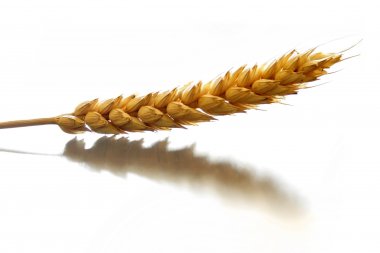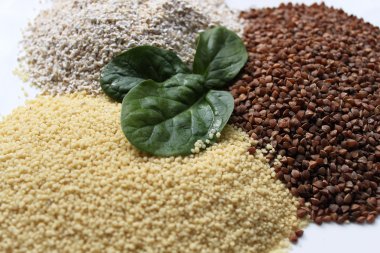What is coeliac disease?

Celiac disease (intolerance to gluten) affects not only children. Adults also suffer from the disease. What are its symptoms? How does her treatment proceed? This disease usually manifests itself in childhood, but there are exceptions. Sometimes it appears between the ages of 35 and 55. It affects women rather than men. Sometimes it develops asymptomatically and many people are not aware of its existence.
The essence of coeliac disease is hypersensitivity to gluten, i.e. protein found in grains of wheat, sheep or barley. It is not known what is the cause of it. There is much to suggest that genetic factors are responsible for this. According to experts, in some people gluten causes an allergic reaction leading to intestinal inflammation and destruction of the mucous membranes. People with auto-aggressive diseases such as type I diabetes, thyroiditis or rheumatoid arthritis often develop coeliac disease. Moreover, the factor triggering the disease can also be a decrease in immunity after an infection or surgery.
Coeliac disease - symptoms
Disease can occur in different ways. In the case of adults, it usually develops in secret. Sometimes it manifests itself with a disturbed rhythm of defecation, but rather sporadically and periodically. Sometimes the body also sends out unusual signals:
- muscle system - muscle contractions and atrophy
- hematopoietic system - pale skin and anaemia
- bone system - bone and joint pains, fractures
- nervous system - epilepsy, tingling
- skin symptoms - inflammation and petechiae,
- endocrine disorders - irregular menstruation, impotence.
All this can be a result of celiac disease. Sometimes, however, the only symptoms are weakness, irritability, gum pain or broken bones. The diagnosis of the disease is therefore difficult.
 Celiac disease - diet
Celiac disease - diet
Unfortunately, there is no drug for coeliac disease. You must follow a gluten-free diet. There must also be people suffering from asymptomatic coeliac disease on such a diet. Gluten destroys the mucous membrane, leading to disturbances in absorption and the development of diseases caused by nutrient deficiency. Sometimes the symptoms of coeliac disease disappear after just a few days from the beginning of the diet. However, it takes from a few months to 3 years for the intestinal mucosa to be added. In addition, sometimes it is also necessary to take vitamins and microelements. In case of severe disease, steroid drugs are used. Celiacs must not be underestimated. Untreated leads to dangerous complications.
Celiac disease - research and testing
 In general, the diagnosis is made after the exclusion of other diseases. First of all, the interview is important. The doctor is looking for symptoms such as anaemia, diarrhoea, delayed menstruation or premature menopause. Its symptoms also include weakness and fatigue. In addition, the following tests are carried out:
In general, the diagnosis is made after the exclusion of other diseases. First of all, the interview is important. The doctor is looking for symptoms such as anaemia, diarrhoea, delayed menstruation or premature menopause. Its symptoms also include weakness and fatigue. In addition, the following tests are carried out:
- imaging and laboratory tests - test for determination of specific IgA antibodies to tissue transglutaminase tTG (an enzyme responsible for the formation of bonds between chains of specific proteins); a positive result indicates disease, but sometimes AGA gliadin antigens are also determined,
- biopsy - this examination consists in introducing an endoscope (a tube with a camcorder) into the duodenum, through which the doctor looks at the intestine and collects tissues for examination; in the case of people with coeliac disease, atrophy of the intestinal villi and inflammation of the intestinal mucosa are diagnosed; also the degree of disease advancement in the scale from I to IV is assessed,
- laboratory tests, blood count, OB, urine analysis, CRP protein concentration, biochemical analyses to assess electrolytes, white, vitamins D, B vitamins, E, calcium and liver tests to determine how much havoc the disease has caused in the body.
Coeliac disease in children
In the case of young children, it is much easier to establish a link between ailments and the consumption of gluten-containing products. They are introduced into the diet gradually. Besides, children have rather typical symptoms of the disease - diarrhoea, flatulence, vomiting, as well as a characteristic posture (enlarged tummy, lowered arms). They are also pale and irritated. They grow free and of little importance. However, after switching to gluten-free diet, they quickly recover and begin to develop properly.
 Gluten-free products
Gluten-free products
Gluten is found in products containing wheat, oats, rye or barley. However, it is not easy to remove it from the diet, because food producers of these grains add almost everything. That is why it is necessary to read the labels very carefully. Bread, groats, pasta, cookies and cakes, soups and flour-treated sauces, beer (made from wheat and barley), cereal coffee or rye vodka should therefore be avoided.
When products contain modified starch or plant proteins it is necessary to check which plant they come from. The same applies to sodium (only corn does not contain gluten) or vegetable rubber (gluten does not contain cellulose gum, arabic gum, guar or locust bean gum). Gluten is also present in dairy products, cold cuts, yellow cheeses, mayonnaise, fruit stuffing, ice cream, buildings, chewing gums, chips or broth cubes. It can also be found in some medicines (cough syrups) or lipsticks.
 Gluten-free diet - safe products
Gluten-free diet - safe products
In a gluten-free diet, products made of corn, soya, buckwheat, millet, rice or amaranth flour are completely safe. These plants do not contain gluten. In addition, you can also use appropriately processed gluten cereals. The menu may also include lamb groats, lentils, nuts, chickpeas, sesame, linseed, sunflower seeds or gluten-free oats.
However, there is one thing to keep in mind. Buckwheat, rice or maize flour available in stores can be contaminated with gluten as a result of grinding in the same mill or processing gluten-free and gluten-free cereals in one plant. That is why it is good to buy products marked in the right way (symbol of the crossed out ear). This is because they are controlled by the relevant organisations.















